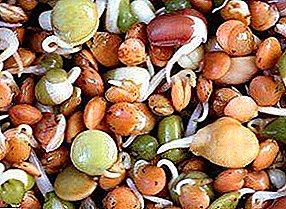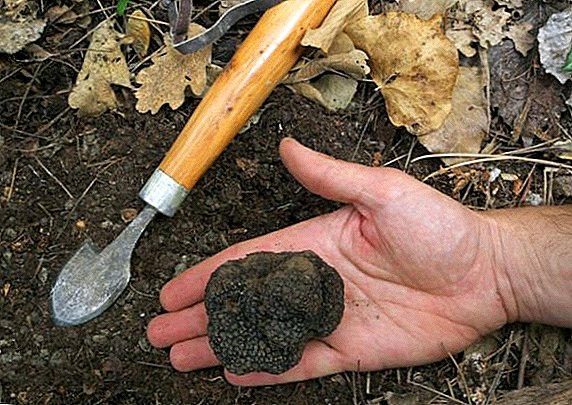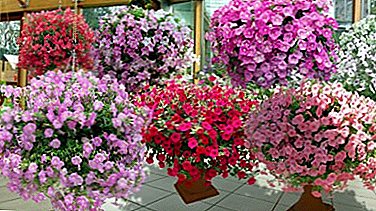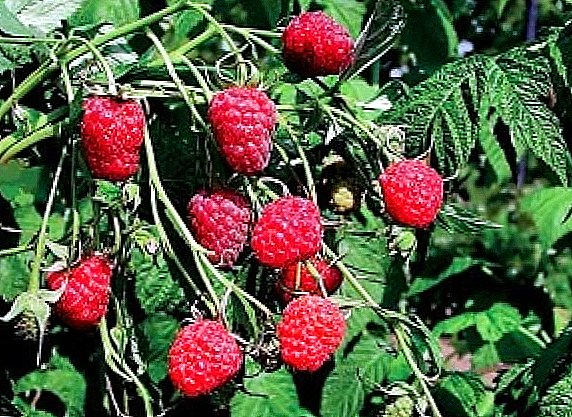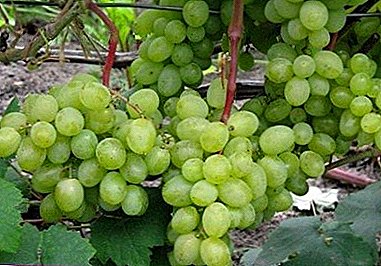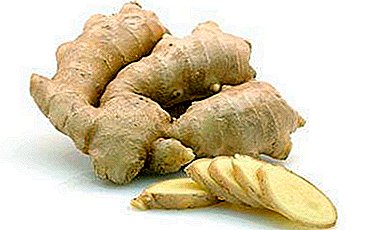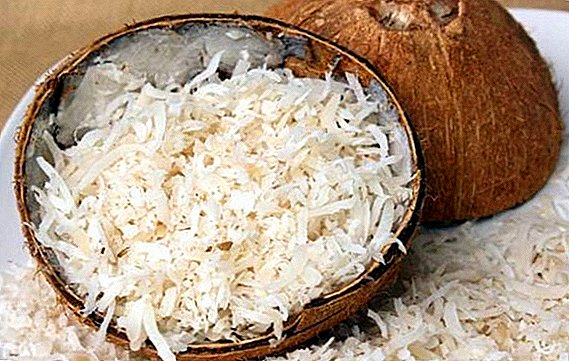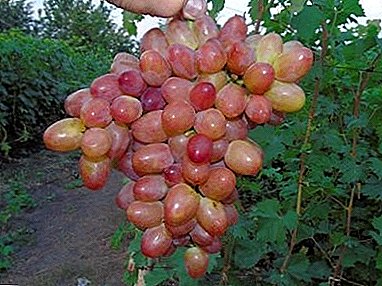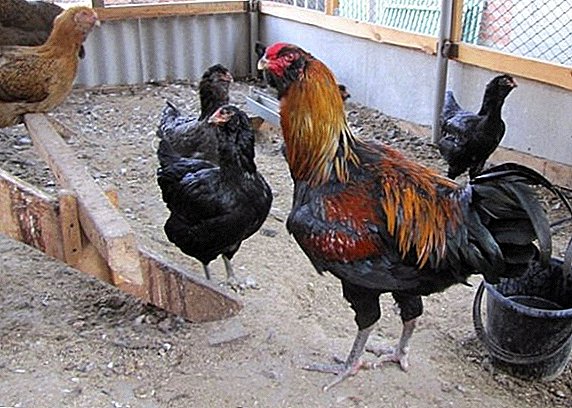 One of the most ancient breeds of hens, known even in Russia, was the Gilyan breed. These birds meat and egg directions are large in size, unusual characteristic appearance and unpretentious content. Despite the fact that at the end of the XIX century the population of Gilan chickens was lost, today, nevertheless, some enthusiasts are actively engaged in its recovery.
One of the most ancient breeds of hens, known even in Russia, was the Gilyan breed. These birds meat and egg directions are large in size, unusual characteristic appearance and unpretentious content. Despite the fact that at the end of the XIX century the population of Gilan chickens was lost, today, nevertheless, some enthusiasts are actively engaged in its recovery.
Selection
It is still not known for certain how and when the breed of Gilan chickens arose. However, it is considered one of the most ancient in Russia, from which the subsequent Oryol breed was derived.
For the first time, the Gilyan chickens came to Russia as early as the 17th century from the eponymous Persian province of Gilan, where they most likely were bred. There is no reliable information about the breeding process of this breed. It is known that for almost three centuries, these chickens were actively bred in Russia, but later, in the XIX century, disappeared, although their gene pool was not completely lost - the famous Oryol breed of chickens was bred on the basis of Gilan.
The breeds of meat and egg direction include the following breeds: Hungarian giant, Kyrgyz gray, Foxy chik, Maran, Redbo, Loman Braun, Amroks.
 Today in Dagestan, not far from the historical homeland, a small population of Gilyan chickens was found, which are now actively bred by members of the Gilyan Chicken Club. Poultry enthusiasts not only restore the population of these poultry, but also ensure that new individuals clearly meet the breed standard.
Today in Dagestan, not far from the historical homeland, a small population of Gilyan chickens was found, which are now actively bred by members of the Gilyan Chicken Club. Poultry enthusiasts not only restore the population of these poultry, but also ensure that new individuals clearly meet the breed standard.
Did you know? Chickens - leaders among birds in numismatics. With the image of chickens minted coins in 16 countries.
Description and Features
Gilyan chickens are original and somewhat unique. Even in appearance, they are very different from their fellows, if only because of the truly gigantic size and peculiar tanks with a beard.
External features
Chickens of Gilyan breed are owners of a bright and memorable exterior:
- head - small in size compared to the body, slightly elongated;
- the crest is small, nut-shaped, knobby, covered with short sparse hairs;
- eyes are reddish, brownish, amber and orange-red, occasionally black, shiny, with a normal fit;
- earlobes - tiny, almost completely hidden by tanks, bright red color;
- earrings - barely noticeable, underdeveloped, red, covered with a beard;
- beak - medium, oblong with thickening at the base, massive, rather strongly curved;
- a beard and tanks are a feature of the bird, always pronounced, and in chickens of the first year of life the tanks are much more developed than the beard, later, with age, the beard becomes more massive and most often has a wedge-shaped shape;
- the neck is a long, “swan”, straight, on it there is a small but noticeable neck;
- torso - large, oblong, muscular, with broad shoulders and broad chest; the body is raised high, similar to a fighting one, with a well-chosen belly; back straight, wide, tapering towards the tail; stand apart shoulders; the plumage on the lower back is dense, but does not form a pillow;
- wings - tightly pressed to the body, not long, wide, slightly protruding in the shoulder area;
- tail - rejected from the line of the back at an angle of 60 °, small in size, set cool, has short braids;
- legs - strong and very long shins, thick, muscular and very stand out; metatarsus well developed, massive, completely lacking plumage (even slight plumage on metatarsus indicates a deviation from the standard);
- the plumage is very dense, rigid, the feather is adjacent to the feather;
- the color - it is completely different - black and white, marble (black and white), blue and other shades, but calico color is a rarity.


Important! The color of the beak is always exactly the same color as the tars and claws. The color mismatch is an unacceptable deviation from the standard.These deviations are also:
- short leg length;
- the presence of even a slight feather cover on the legs;
- comb of any other shape, except nut;
- underdevelopment or lack of tanks and beard;
- small weight and size of the bird.
Temperament
By temperament, Gilyan breed chickens are active, inquisitive, and can even be aggressive. Between the representatives of the breed do not fight, but with other birds, skirmishes and battles can occur. Cocks bold, sometimes reckless, can engage in battle with the enemy, which is much greater than their size and strength. To avoid unnecessary conflicts, it is best to keep Gilanians away from other poultry.
Check out the best representatives of chicken meat and egg directions.
The heightened curiosity of these chickens leads to the fact that they are ready to stick their beak in any wrong place, so they are able to leave the hen house and walking yard, to look for loopholes outside. Given this factor, it is recommended to prudently limit the free space around the herd.  The Gilyan breed also has a herd instinct - they are very friendly, they prefer to spend time and graze collectively.
The Gilyan breed also has a herd instinct - they are very friendly, they prefer to spend time and graze collectively.
Hatching instinct
Gilyan clubs have not lost their incubation instinct - they hatch eggs with pleasure. The hens are also very concerned about their offspring after the chicks hatch, regularly lead the brood, warm the chickens and are very good mothers.
Gilanty fledglings fledge for a very long time, but this is not a problem, and the chickens do not freeze, because the wedge takes care of the cubs for the entire childhood period and heats them with its warmth.
Productivity
Gilyan chickens are not just called giant - they are truly giants among chickens. They are tall, fleshy, lean and very large.
The meat-egg direction of the breed means that its representatives provide not only a good yield of meat, but also a significant amount of egg production per year.
Live weight chicken and rooster
 Young roosters (at the end of the first year of life) usually weigh about 6 kg, and their height reaches 70 cm. In adult males (after a year) the weight can exceed 7 kg, and the height can be at least 80 cm.
Young roosters (at the end of the first year of life) usually weigh about 6 kg, and their height reaches 70 cm. In adult males (after a year) the weight can exceed 7 kg, and the height can be at least 80 cm.
Did you know? There are cases when Gilyan roosters grew to 95 cm tall and weighed almost 10 kg.Poultry chickens (before the first year of egg production) weigh a little less - about 5 kg, and grow from 50 to 55 cm. Overworked hens (at the end of the first year of egg production) are larger - up to 6 kg in weight and up to 60 cm in height.
When they start to trot and what is egg production
Gilyan chickens can not be called not only early, but even mid-season. Birds grow slowly, mature for a long time and become adults only by the second year of life. Thus, the Gilan klush begin to rush only at 2 years. However, the delay at the beginning of the egg production period is compensated by the fact that this period is longer in chickens than in other breeds. Egg-laying in these birds lasts for 3 years.
After the chicken began to lay eggs, in the first year their number ranges from 140 to 150 pieces per year. In the future, this number is slightly reduced - about 120 eggs per year.
Check the egg for freshness, as well as to observe the development of embryos in the egg will help a special device - ovoskop. By the way, you can build it yourself.
Gilan's eggs are very large - in the worst case their weight can be about 70-75 g, but mostly the weight indicators are larger. We can say that the egg products of this breed are fully combined with the appearance of the bird: large chickens - large eggs.  The color of the shell is light and tender, often a beige-cream color, light cream or pale pink.
The color of the shell is light and tender, often a beige-cream color, light cream or pale pink.
Important! It is remarkable in the Gilyan chickens that they are actively riding in the winter. - while all the other chickens are no longer rushing, the Gilan whips continue to regularly supply egg products.
What to feed
These layers are very unpretentious in terms of housing and nutrition, they are able to feed on any pasture, but the feed rich in vitamins, proteins and calcium will help the birds to maintain excellent health and give good productivity.
Learn how to cook feed for laying hens at home.
Chickens
The Gilyan breed naturally enjoys excellent health, has good immunity to most diseases, and babies are born strong and healthy. The survival rate of chicks exceeds 95%, which is a good indicator.
- In order for the young growth to grow strong, they start feeding it no later than 12 hours after the chicks hatch. For the first three days, the feed consists of crushed hard-boiled eggs mixed with barley - barley or millet. Blender may also contain oatmeal or low-fat cottage cheese. All ingredients must be thoroughly crushed and milled, the porridge is homogeneous and served warm to the chickens.
- On the third day of life, fresh greens, grass, and vegetables are introduced into the diet of chicks. This may be clover, nettle or alfalfa, as well as boiled vegetables, sweet potatoes, carrots, pumpkin. Herb is pre-scalded with boiling water and finely chopped, and the vegetables are boiled and kneaded in mashed potatoes.
- All the first week of life, babies should get mash bags of cereals, herbs, vegetables and eggs.
- From the second week of life, you can begin to add flour or bone meal to the chicks' feed.
- Be sure to give the chicks enough water so that they can quench their thirst at any time. In the water, you can add a very weak solution of potassium permanganate - this tool will save the baby from parasites and pests and prevent many infectious diseases.
- By the end of the first month of life, chickens are gradually being transferred to adult herd feed, but they are careful to have an increased amount of protein and calcium in their diet.

It will be helpful for you to learn how to breed chicks with an incubator and what diseases they may be exposed to.
Adult flock
An adult herd is fed no more than 3 times a day, and two of them should consist of grain feed, and the third meal - a wet mash.
It is important to ensure that the birds receive all the necessary nutrients, there is enough protein and calcium in the feed. For this you can use mixed high-protein feed.
In general, Gilians are able to eat any food suitable for chickens.  Their diet usually includes:
Their diet usually includes:
- grain - wheat, oats, barley, corn, rye, or mixed cereals;
- fresh greens and grass help maintain vitamin balance of birds; in winter, you can do without greens, but if you replace it with germinated cereals, it will favorably affect the health of chickens, especially if you consider that in winter they have no break in egg-laying and the need for vitamins remains the same;
- It is useful to feed Gilians with animal waste from their table, these can be remnants of boiled meat or fish, and also chickens can be given worms, maggots, cake and meal - such a diet will fill the bird's need for animal proteins;
- Calcium is replenished by chalk, bone meal and fish meal, and crushed shell rock, which birds eat with pleasure;
- for the health of the digestive system of birds, crushed egg shells, gravel and crushed bones, such additives not only contribute to better digestibility of products, but also satisfy the need for mineral components.
Important! An important condition in feeding Gilyan chickens - Diet and its portion. After eating, all food residues must be removed, otherwise the birds will overeat and gain excess fat, and this will adversely affect their health.
Conditions of detention
Although the Gilyan breed chickens are rather unpretentious birds, they still need the right conditions for the birds to feel good. 
Did you know? Chicken egg protein - "standard" among the eggs of other species of birds. All other proteins are compared with it.
Requirements for the house
The bird house is the main location in which the birds are located, so it must meet their physiological needs.
- Build a house in a place where it will not be flooded during the rains. There should not be groundwater, the place should be dry, protected from drafts, can be located on a hill or on a hillock for rainwater to flow. Well, if there is an opportunity to arrange the chicken coop so that it is not in the summer under direct sunlight. Birds need a lot of diffused light, but the heat they carry is very bad, and therefore the house should be even in the summer heat a relatively cool place where chickens could shelter from the heat.
- The size of the bird house depends on the number of livestock. The main thing is that the ceiling height is about 1.8 m, and the perimeter must be calculated, taking into account that one bird needs a space of at least 1 square meter. m
- The poultry house must be adjacent to the paddock, in which chickens may have a permanent exit. To do this, the chicken coop is equipped with a special small opening for birds. Based on their large size, the height of this opening should be at least 1 m.
- In winter, it is not necessary to warm up the chicken coop with heating devices, as Gilians feel great at low temperatures. It will be enough to make a structure with thick walls, without drafts and with a warm floor. Worst of all, Gilians feel in the summer heat, so the temperature at this time of the year in the room should ideally not exceed +25.
- The floor in the house must be covered with a litter, the thickness of which should be 10-15 cm. The litter can be made of hay, dry grass and sand mixed with sawdust.
- The house is equipped with lamp lighting and a pair of windows. This is necessary in order to prolong the daylight hours in the winter to 14 hours or more, because egg-laying depends on it.
- Mandatory attributes of the chicken coop - perches and nests. The number of perches is based on the number of chickens in the calculation that one individual needs at least 40 cm of space. They can be positioned in steps or along the perimeter of the walls. The thickness of the perch pole should correspond to the circumference of the chicken paw. As for the nests, it is not necessary that each wedge had a separate nest. Chickens rush alternately. The main thing is that the place for nests should be quiet, comfortable, darkened.
- If, after hatching, chicks will be kept in a common poultry house, the room must be equipped with additional heating, for example, with infrared lamps. However, excessive heat is unfavorable for adults, but it is necessary for chicks. Therefore, it is recommended that during the first months, until the chicks have fledged, they should be kept in a special heated room.
- In the hen house there should also be drinkers, feeders and ash baths in the form of boxes filled with a mixture of oven ash and sand.
- Ensure that no moisture accumulates in the bird house, the walls are not blown by the winds, that mold does not appear, and the air is fresh. To do this, you can equip hoods in the hen house.
- Cleanliness is imperative. The bird house is regularly cleaned - cleaned of dirt, litter and food debris. The litter is gradually replaced by a fresh one. All attributes (feeders and drinkers) must be regularly cleaned and disinfected.

Learn how to build a house on the summer cottage with your own hands.

Did you know? Hilians are excellent for Russian latitudes, since thick and dense plumage reliably protects them from the cold, but in the heat they feel bad. But chickens are bred all over the planet, even in the hottest regions. To this end, in some countries of Central Asia, bald chickens were bred, which are perfectly tolerate the summer heat.
Walking yard
The walking yard is obligatory for birds, especially for active and inquisitive Gilan chickens. Here, birds breathe fresh air, walk, eat, communicate, lead an active lifestyle.
- The requirements for the location of the walking yard are the same as for the chicken coop - a dry, unfinished place without drafts. Well, if the courtyard will be pritёnen. But it is desirable that it is not located under the tree, since parasites may be contained in the tree bark, and located in the shade or partial shade of some nearby building or structure. Pritennaya terrain will avoid incandescent walking area in the summer.
- The courtyard is made fairly large, given that at least 1 square meter is required for each Gilian. m of free space.
- The walking yard must necessarily contain drinkers, feeders and ash baths, so that birds can spend their time in full, not only in the house, but also outside.
- And the most important thing for the Gilyan breed is the height of the fence around the walking area. These birds are large and tall, besides very curious. They will definitely try to make an attempt to escape, to see what's next behind their possessions. Therefore, the fence or grid should be quite high.

How to endure winter cold
This breed of chickens appeared in the cold climate of some territories of modern Russia. In the 17th century, winters in Russia were harsh and frosty.
Familiarize yourself with the features of keeping chickens during the cold period, and also learn how to increase their egg production in winter.
Gilyantsy accustomed to such temperatures. They have very dense plumage, which does not allow birds to freeze even in the big frost. Therefore, they are extremely frost resistant.
Is it possible to breed in cages
Разведение кур в клетках чаще всего подразумевает только яичное направление. This way of keeping saves space, especially given the shortage of it, but does not imply walking chickens and the presence of a rooster.
Gilan breed can hardly be called purely egg. These are rare chickens, which are now actively bred to expand the population. Which means content in cells is not suitable for them.  Growing poultry in cages makes sense when there is no need for breeding, to get chickens and fertilized eggs. This method is suitable for mass production of egg products and is mainly used only for layers.
Growing poultry in cages makes sense when there is no need for breeding, to get chickens and fertilized eggs. This method is suitable for mass production of egg products and is mainly used only for layers.
Important! In contrast to the winter cold, the summer heat of the Gilan breed suffers much worse. They do not like the heat and feel bad in the summer. Therefore, it is not recommended to breed this breed, if summer is hot in your strip, because Gilanians do not like even warm summer days, what can we say about temperatures above +30.
Chickens of meat and meat-egg breeds, to which Gilanians belong, should gain muscle mass well, and this is impossible in terms of cellular content, since in the cell they will only increase fat, which is harmful for this breed.
Advantages and disadvantages
This old Russian chicken has several advantages:
- bright and memorable appearance, creating a good aesthetic impression;
- significant meat yield due to large, massive poultry sizes;
- good egg production, as for chicken meat and egg direction;
- large egg size;
- frost resistance;
- unpretentiousness;
- endurance;
- quite a long laying period;
- the presence of a brooding instinct, which many breeds of chicken meat and egg lines have lost.
 In addition to the advantages, Gilians still have some drawbacks:
In addition to the advantages, Gilians still have some drawbacks:- long growth and late sexual maturity;
- nestlings do not fledge for a long time and therefore need additional heating in the first months of life;
- do not tolerate high summer temperatures;
- heightened inquisitiveness, which forces the fence to enclose the walking yard with a high fence;
- Gilanians dislike for other breeds, which often becomes the cause of bird fights.


